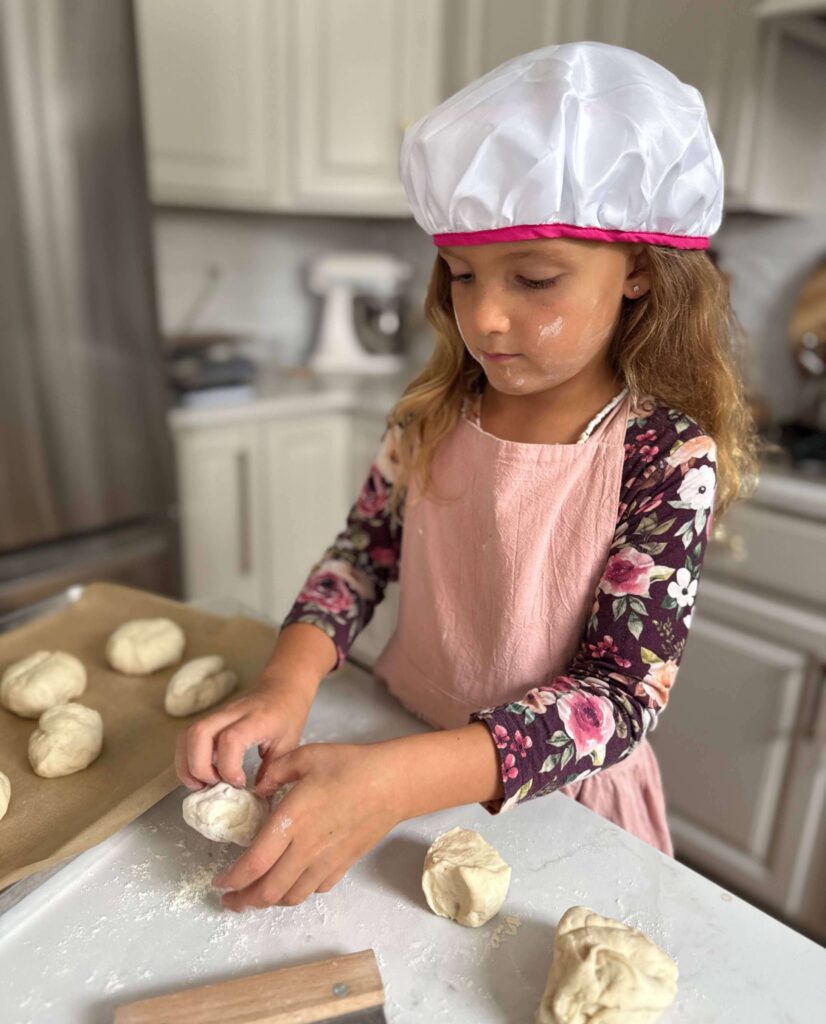Why these buns are worth it
Sourdough isn’t just about taste — it’s one of the most nutrient-dense ways to bake. During a long, natural fermentation, lactic-acid bacteria and wild yeasts help reduce phytic acid (the mineral-binding compound in grains) and can improve mineral bioavailability; that same fermentation also drives deep flavor. PMC+1
Fermentation time matters for texture, too. Sourdough microbes and their enzymes actively break down and remodel gluten proteins, which is part of why long-fermented doughs can feel gentler than our more modern packaged breads.
And here’s my favorite trick: you can turn many standard yeast recipes into sourdough by swapping the commercial yeast for active starter and giving the dough a slow, overnight rise; adjust flour/water to account for what’s in your starter. I use ¼ cup bubbly starter instead of the dry yeast in any bread recipe!
✨ The Recipe: Homemade Sourdough Buns
Soft inside, lightly crusty outside, and perfect for dinner, sliders, or burgers.
Ingredients
- ¼ cup active sourdough starter
- 1 1/4 cup warm water
- 3 Tbsp honey
- 4 Tbsp melted butter
- 3–4 cups flour (start with 3; add more as needed)
- 1 tsp salt
Method (your exact steps)
1️⃣ Mix ¼ cup starter, 1 cup warm water, 3 Tbsp honey, 4 Tbsp melted butter.
2️⃣ Add 3–4 cups flour and 1½ tsp salt.
3️⃣ Knead until smooth and elastic.
4️⃣ Let rise overnight.
5️⃣ Shape into buns, and let rise another hour.
6️⃣ Bake at 375°F for 20–25 minutes for buns or 25 minutes in a covered Dutch oven and 15 minutes more uncovered for a loaf of bread.
Baker’s notes (so they turn out every time)
- Overnight option (more flavor): After step 3, cover and cover with a damp tea cloth and let sit overnight or 8–12 hours.
- How much flour? Start at 3 cups and add by tablespoons until the dough is tacky, not sticky. Hydration varies with flour and starter.
- Knead test: When the dough feels bouncy and smooth and can stretch into a thin “windowpane,” you’re there.
- Shine & color (optional): Brush with egg wash just before baking.
- Steam helps: Use a dutch oven or pop a small pan of hot water on the oven floor for the first 10 minutes for a thinner, shinier crust.
- Cooling: Let buns cool at least 20 minutes so the crumb sets (resist cutting too early).
Make-ahead & storing
- Same-day: Best the day they’re baked.
- Next-day softness: Warm in a 300°F oven for 5–7 minutes.
- Freeze: Split, wrap well, and freeze up to 2 months; reheat from frozen at 325°F for ~10 minutes.
Serve them tonight
Pile them butter and honey for a tea time treat or with Sunday Sauce meatballs for a delish lunch, pull them apart with soup, or make mini-sliders for game day. Homemade gets easy when you learn one great recipe at a time — and these buns are that recipe!
Want more cozy, simple recipes that nourish your family + home?
💌 Subscribe to my free Sunday newsletter (and follow @homemade_simplesteps) for weekly from-scratch inspo.

